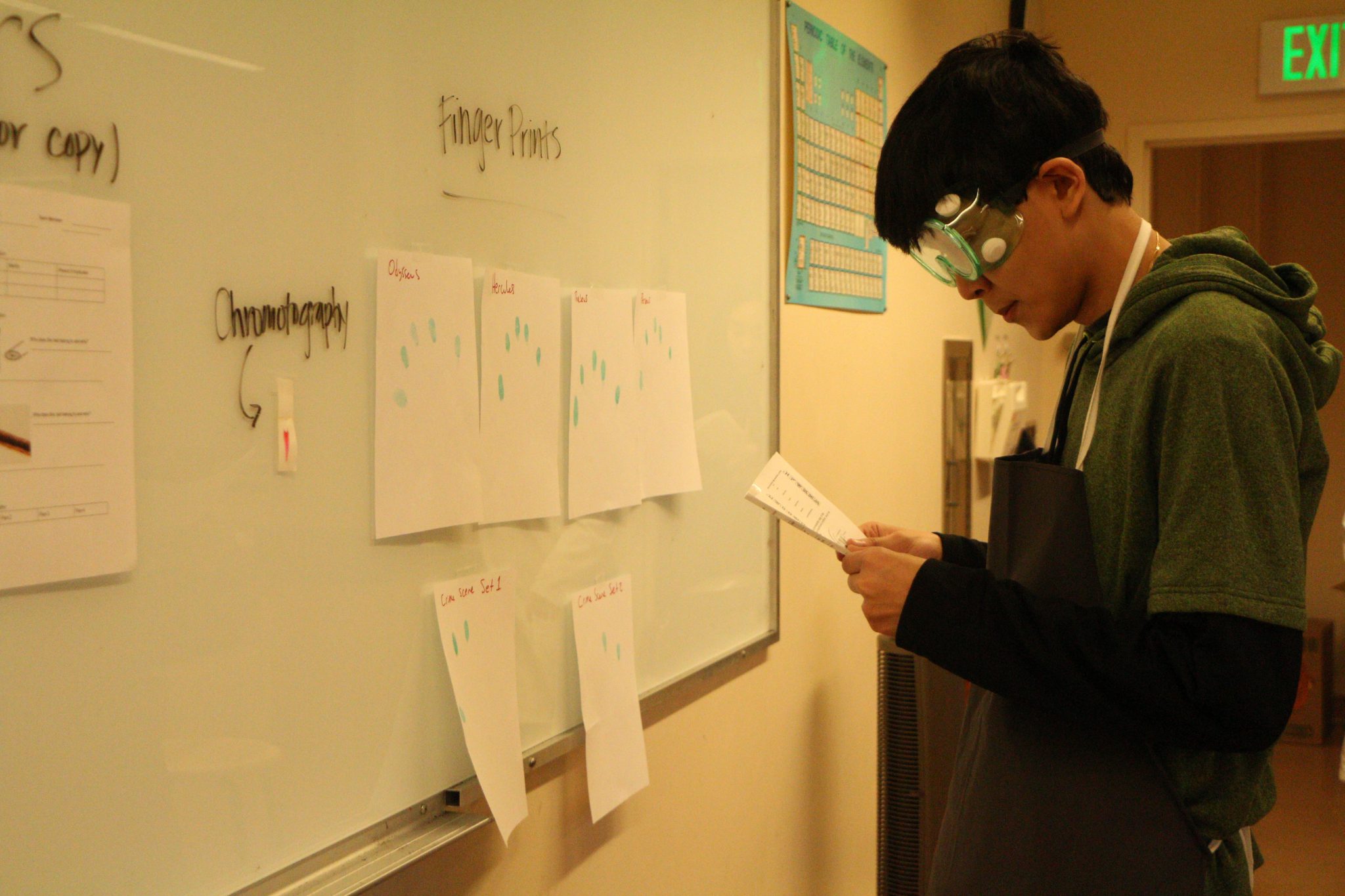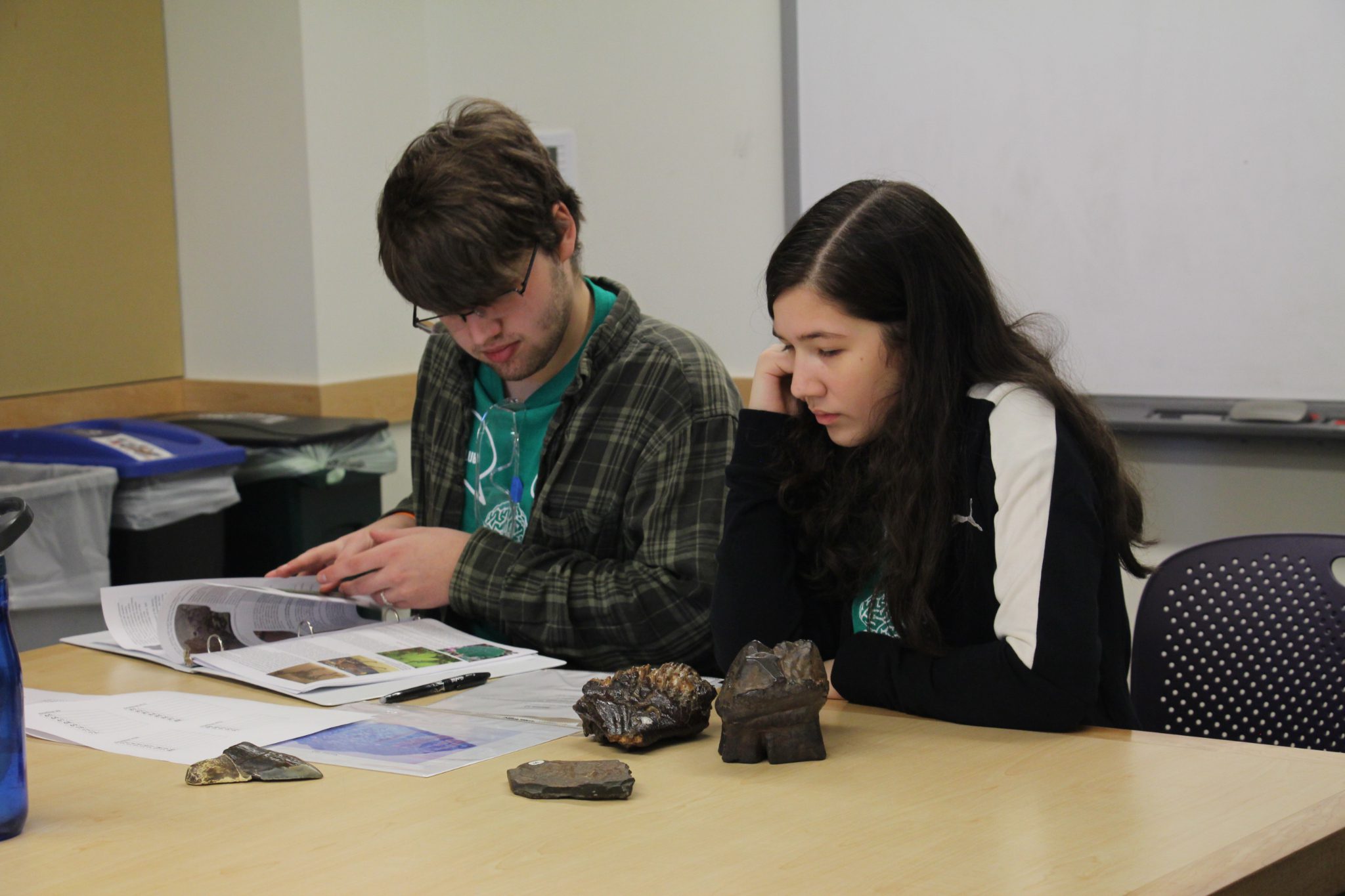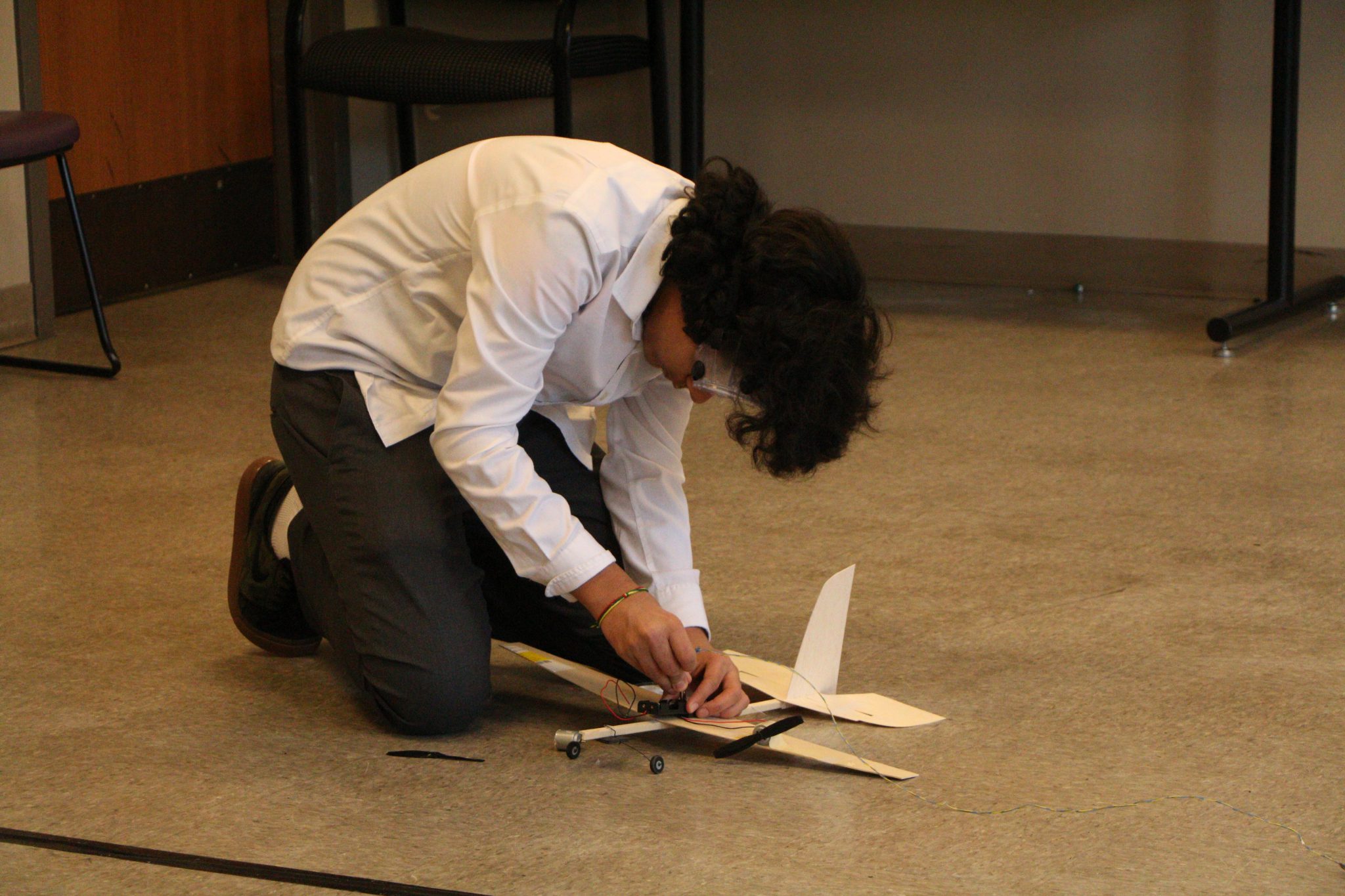People
Head Coach
Each team is led by a Head Coach, who is an official representative of the school, usually a teacher or district employee. The Head Coach must be authorized by the school’s principal to represent the school in various situations such as medical emergencies, scoring disputes, disciplinary actions, and school sanctions.
Team Size and Composition
A team can have up to fifteen (15) student participants. While a school’s Science Olympiad “Club” may include more students who are training or helping prepare, only 15 can compete on the day of the tournament. It is common for teams to have fewer than 15 students. Teams must adhere to specific grade-level requirements, which can be found here. An official team roster documenting the participants must be submitted on the morning of the tournament.



Captions top to bottom, left to right: 1. A high school student reviews evidence for the Forensics event during a Regional Tournament at the University of Washington in 2017. 2. High school students work to identify a specimen in the Rocks & Minerals event during a Regional Tournament at the University of Washington in 2019. 3. A student configures their motorized airplane they constructed for the LEAF Challenge during a Regional Tournament at the University of Washington in 2017. (Photo Credits: George Sun)
Before the Tournament
Registration Requirements
To participate in a Science Olympiad tournament, teams must have a school-approved head coach, submit the online registration form, pay any membership dues, and, depending on the tournament site, provide proof of insurance. More information is available on the registration page, and any requirements will be communicated to the head coach.
Team Number
After registering with Washington Science Olympiad, each team will receive a Team Number, which remains the same for Regional and State Tournaments within Washington State and is used for identification and scheduling. The Team Number typically includes a letter indicating the team’s division, followed by a two-digit number (e.g., B04, B27, C01, C39). If a team participates in Invitational Tournaments or tournaments outside of Washington State they are still required to register with Washington Science Olympiad per national policy but may receive a different team number for that tournament.
Preparing for the Tournament
Rules Manual: The rules are released the Tuesday after Labor Day and can be downloaded for free from the national website. These manuals, along with any posted Rules Clarifications, detail the requirements and parameters of the events.
Rules Changes/Corrections, Rules Clarifications, and Frequently Asked Questions (FAQs): Rules Changes/Corrections are made to correct or alter the meaning of a rule, while Rules Clarifications/Frequently Asked Questions (FAQs) are issued to address any questions about the rules. These updates apply to all tournaments in Washington State and must be considered part of the rules. Some tournaments may have their own clarifications in addition to those posted on the main website. Teams should check with their tournament for specific policies or clarifications.
General Rules: General rules apply to all events and cover Frequently Asked Questions. These rules are published in the Rules Manuals each year and can also be found online.
Schedules
Once the preliminary schedule for a tournament is posted, teams should review it to understand event groupings and conflicts. Schedules are usually organized by Team Number into rotations.
Scheduled Events: To fit 23 or more events in a single day, event conflicts for scheduled events end up being common but they are the same for all teams ensuring no one team has a scheduling advantage. If a student wants to compete in two events, they will need to check the schedule to ensure that they do not conflict. If the events conflict, they must choose one and have another student on their team cover the other event.
Self-Scheduled Events: Some events allow teams to choose their competition times, providing flexibility to work around conflicts. Self-scheduled event signups typically occur a few weeks before the tournament and are usually first-come, first-served. Participants may be able to show up at any time during their selected time block, though some events may require them to be present for the entire block. Check the tournament scheduling information for details.


Captions top to bottom, left to right: 1. A high school student performs a series of experiments for the Chemistry Lab event during a Regional Tournament at the University of Washington in 2019. 2. Students from Inglemoor High School carefully pour sand into a bucket for the Tower event at a Regional Tournament at the University of Washington in 2017. (Photo Credits: George Sun)
Day of the Tournament
Wristbands
Many Science Olympiad tournaments require students and coaches to wear wristbands. These wristbands serve as identification, ensuring that only authorized participants and coaches are recognized during the event. Be sure to check the specific requirements of your tournament and ensure that all team members are wearing their wristbands as instructed. This helps maintain the integrity and security of the competition.
Arbitrations and Appeals
If a team believes an event was conducted inconsistently with the official rules, the Head Coach can file an Appeal. An Arbitrations team will review and investigate the Appeal and make a final ruling. The appeal process varies by tournament but generally involves filling out a form, either paper or online.